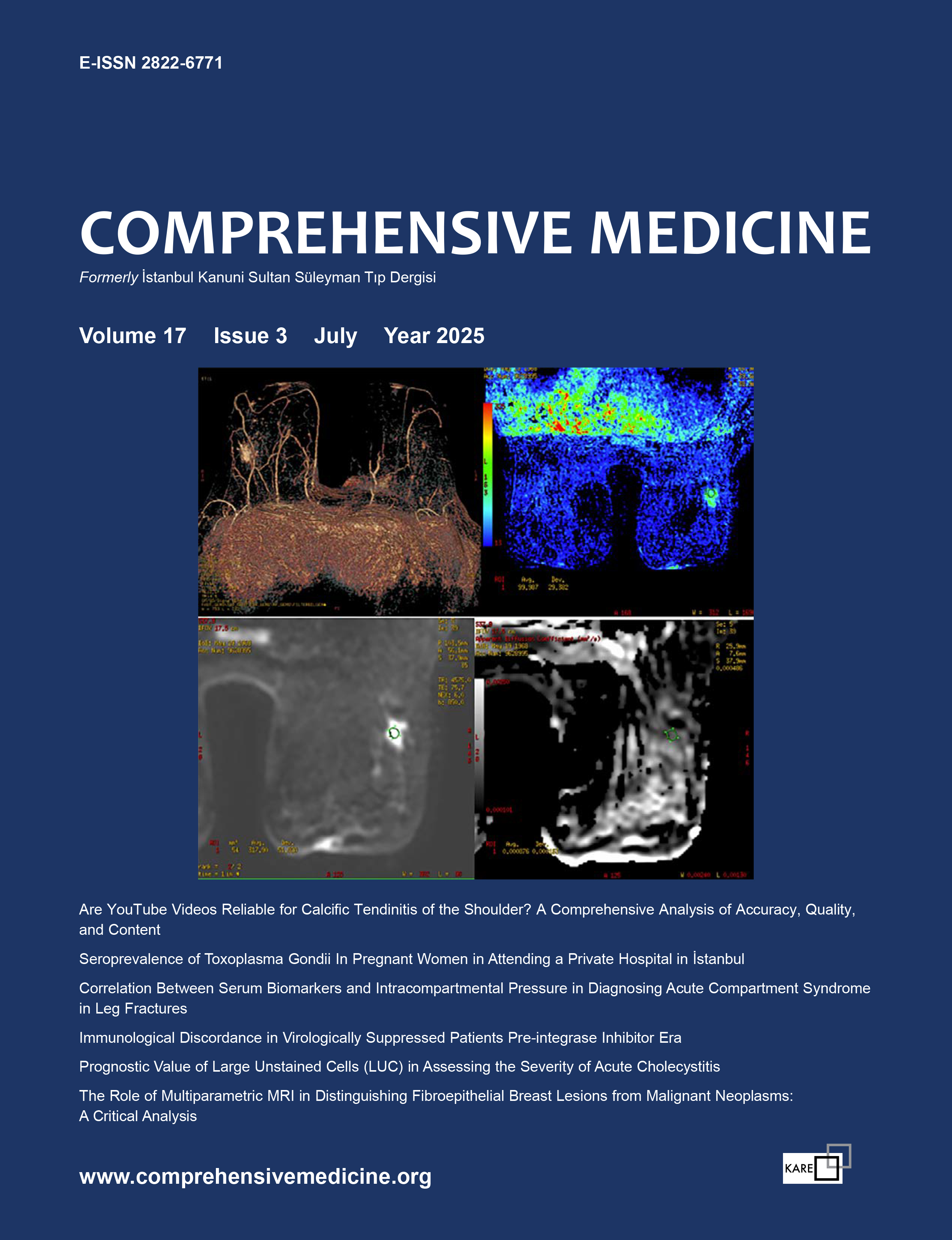The Impact of Vitamin D Status on the Clinical Outcome of Acute Rotavirus Gastroenteritis in Preschool Children
Vafa Guliyeva1, Gülser Esen Besli21Department of Child Health and Diseases, Medeniyet University, Göztepe Training and Research Hospital, İstanbul, Türkiye2Department of Pediatric Emergency, Medeniyet University Göztepe Training and Research Hospital, İstanbul, Türkiye
INTRODUCTION: This study aims to evaluate the impact of vitamin D on the clinical outcome of acute rotavirus gastroenteritis in children under 5 years.
METHODS: This prospective study included 70 patients in a pediatric emergency department with rotavirus gastroenteritis. Patients were divided into two groups based on serum 25-hydroxy vitamin D3 (25(OH)D3) level: low vitamin D (<30 ng/mL) and normal vitamin D (≥30 ng/mL). Disease severity and clinical outcomes were compared.
RESULTS: Out of 70 patients, 55 (78.6%) were in the low vitamin D group. The patients with normal serum 25(OH)D3 levels were younger than those with low serum 25(OH)D3 levels (p=0.01; p<0.05). The Vesikari scores, the severity of dehydration, the need for intravenous fluid, and the duration of diarrhea were similar between the groups. The low vitamin D group had higher hospitalization rates and longer hospital stays than the normal vitamin D group (p=0.015; p<0.05, and p=0.035; p<0.05, respectively). Low vitamin D was identified as a predictive risk factor increasing the risk of hospitalization (p=0.016; p<0.05) and prolonged hospital stay (p=0.003; p<0.01). Exclusive breastfeeding in the first six months was a protective predictor for reducing diarrhea duration and length of hospital stay (p = 0.024; p<0.05 and p=0.035; p<0.05, respectively).
DISCUSSION AND CONCLUSION: This study suggests low vitamin D status is a preventable risk factor for more severe disease courses in preschool children with rotavirus gastroenteritis.
Okul Öncesi Çocuklarda Akut Rotavirüs Gastroenteritinin Klinik Seyri Üzerine D Vitamini Düzeyinin Etkisi
Vafa Guliyeva1, Gülser Esen Besli21Medeniyet Üniversitesi, Göztepe Eğitim ve Araştırma Hastanesi, Çocuk Sağlığı ve Hastalıkları Anabilim Dalı, İstanbul, Türkiye2Medeniyet Üniversitesi, Göztepe Eğitim ve Araştırma Hastanesi, Çocuk Acil Servisi, İstanbul, Türkiye
GİRİŞ ve AMAÇ: Bu çalışma, 5 yaş altı çocuklarda akut rotavirüs gastroenteritinin klinik sonuçları üzerindeki D vitamini düzeyinin etkisini değerlendirmeyi amaçlamaktadır.
YÖNTEM ve GEREÇLER: Bu prospektif çalışmaya, çocuk acil servisinde rotavirüs gastroenteriti tanısı alan 70 hasta dahil edilmiştir. Hastalar, serum 25-hidroksi D vitamini (25(OH)D3) düzeylerine göre iki gruba ayrılmıştır: düşük D vitamini (<30 ng/mL) ve normal D vitamini (≥30 ng/mL). Hastalık şiddeti ve klinik sonuçlar gruplar arasında karşılaştırılmıştır.
BULGULAR: Toplam 70 hastanın 55’i (%78,6) düşük D vitamini grubunda yer almıştır. Normal serum 25(OH)D3 düzeyine sahip hastalar, düşük düzeye sahip olanlara göre daha gençti (p = 0,01; p < 0,05). Vesikari skorları, dehidratasyon şiddeti, intravenöz sıvı ihtiyacı ve ishal süresi gruplar arasında benzerdi. Ancak, düşük D vitamini grubunda hastaneye yatış oranları daha yüksek ve hastanede kalış süreleri daha uzundu (sırasıyla p = 0,015; p < 0,05 ve p = 0,035; p < 0,05). Düşük D vitamini düzeyi, hem hastaneye yatış riskini artıran (p = 0,016; p < 0,05) hem de hastanede kalış süresini uzatan (p = 0,003; p < 0,01) öngörücü bir risk faktörü olarak tanımlanmıştır. İlk altı ayda yalnızca anne sütü ile beslenme, ishal süresi ve hastanede kalış süresini azaltmada koruyucu bir öngörücü olarak bulunmuştur (sırasıyla p = 0,024; p < 0,05 ve p = 0,035; p < 0,05).
TARTIŞMA ve SONUÇ: Bu çalışma, düşük D vitamini düzeyinin, okul öncesi çocuklarda rotavirüs gastroenteritinin daha ağır seyretmesine yol açabilen önlenebilir bir risk faktörü olduğunu düşündürmektedir.
Manuscript Language: English






















